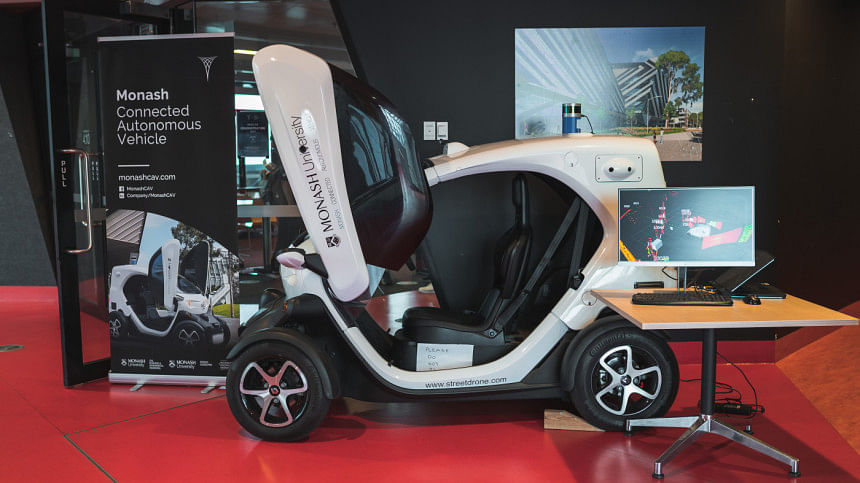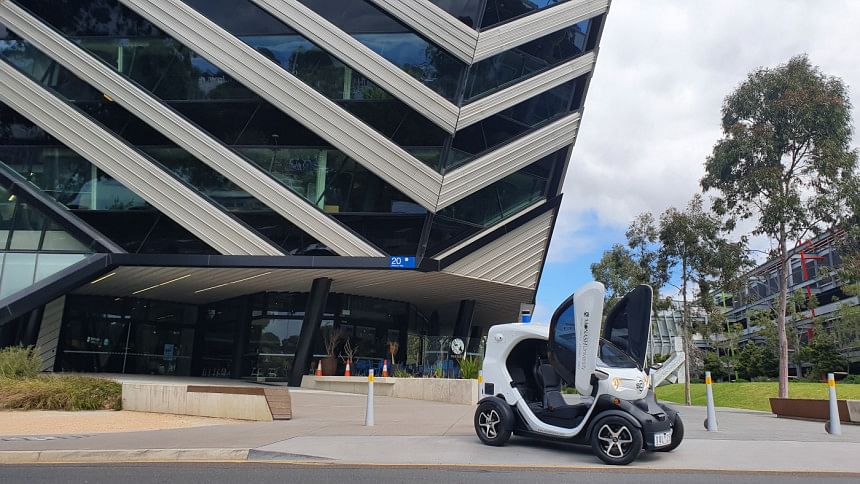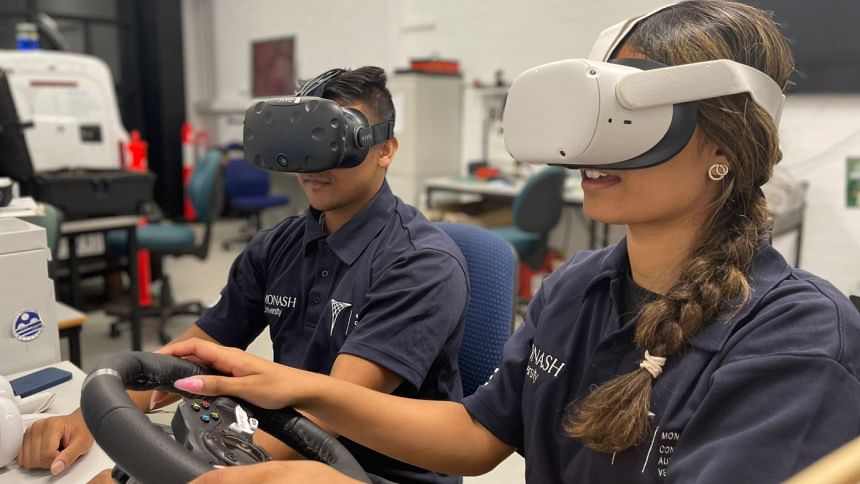Meet Monash University's VR-run autonomous vehicle project

In the modern world of electric vehicles and self-driving Teslas, imagining an autonomous vehicle might not be too difficult. To put it in simple terms, an autonomous vehicle - in theory - can operate on its own without needing a human to control or command it. However, despite recent breakthroughs in autonomous technologies, there are still difficulties in maintaining a truly automatic car - as even the most advanced self-driving ones are known to crash and fail.
Monash University's Virtual Reality Autonomous Vehicle (VRAV) project - focused on research and development of autonomous vehicles - is attempting to put a different spin on the 'self-driving car' concept, by combining it with VR technology. According to Ezazul Hoque, the Project Lead for the VRAV project at Monash Connected Autonomous Vehicle (MCAV), the aforementioned project aims to refine the technology of autonomous cars using VR while addressing technical challenges and feasibility of a VR-based automatic car in modern society.
The VRAV project, in essence, is an augmented on-road driving simulator that uses autonomous vehicles in a virtual reality setting. This allows drivers, wearing a VR headset, to test their responses to traffic conditions and find out potential problems before getting on an actual vehicle. As per the Monash University website, the project received the Intelligent Transport Systems (ITS) National Research Award in 2019, and since then, has secured sponsorship support from external sources, including private companies in Australia.

"The idea of integrating virtual reality technology with autonomous vehicles provides a unique and engaging way for users to interact with the vehicle," states Ezazul. He believes that this project will help promote public awareness and interest in autonomous vehicle technologies. Since the research his team conducts focuses on the potential benefits of autonomous vehicles, the findings can potentially increase safety on the roads, improve traffic flow and reduce environmental impact.
"Autonomous vehicles have the potential to make transportation safer, more efficient and more sustainable," shares Ezazul. He believes that by removing the human element from driving, autonomous vehicles can reduce the risk of accidents caused by human error, as well as increase the efficiency of transportation systems by reducing traffic congestion and improving fuel efficiency. "Our StreetDrone technology uses a combination of sensors, cameras, radar, and Lidar to perceive the environment. These inputs are processed by an onboard computer, which uses advanced algorithms to make driving decisions, such as acceleration, braking, and steering," explains the Project Lead.
The project aims to push further advances in autonomous vehicle technology and enable the development of even more sophisticated and efficient transportation systems. This may involve integrating new sensors, control systems, and AI technologies to improve vehicle safety, performance, and reliability. "I believe that the integration of virtual reality technology will continue to play an important role in the development of autonomous vehicles, allowing for more intuitive and immersive user experiences," adds Ezazul.
However, despite the potential of VR-assisted autonomous driving, there are obstacles to such a concept in Bangladesh - especially considering the absence of existing frameworks for autonomous vehicles. "In countries that allow autonomous vehicles, there are specific traffic laws and regulations to ensure the safe integration of these vehicles on public roads. For example, in the US, the National Highway Traffic Safety Administration (NHTSA) has laid out guidelines for testing and deployment of autonomous vehicles. These guidelines include requirements for vehicle performance, data recording and sharing, privacy and security, and more," states Ezazul.
He suggests that Bangladesh could consider adopting a similar framework, focusing on safety, performance, and data sharing. "It's essential to involve stakeholders such as automotive manufacturers, technology companies, and local authorities in the process to create a comprehensive and effective regulatory environment," he adds. Nonetheless, he believes that if Bangladeshi laws were to allow autonomous vehicles, local production could be feasible, provided there is a supportive infrastructure, including skilled labour, technology partnerships, and investment in research and development.

As far as costs go, developing a VR-run autonomous vehicle can vary significantly depending on the complexity of the system, the level of autonomy, and the specific technology used. "It's difficult to provide an exact cost, but development can range from tens of thousands to millions of dollars," says Ezazul. According to him, one potential approach to implementing autonomous vehicles in Bangladesh could involve starting with smaller, more controlled applications of the technology, such as autonomous shuttles or delivery vehicles operating on predetermined routes. This would allow for testing and refinement of the technology in a more controlled environment and could help to build public trust and support for autonomous vehicle use.
Ezazul adds that the integration of autonomous vehicles could help to address several challenges facing Bangladesh, such as traffic congestion and air pollution. "By reducing the number of vehicles on the road and optimising traffic flow, autonomous vehicles could help to improve air quality and reduce travel time for commuters. Moreover, autonomous vehicles could provide transportation access to people who are unable to drive, such as the elderly and disabled, and help to promote greater social and economic inclusion," he further adds.

 For all latest news, follow The Daily Star's Google News channel.
For all latest news, follow The Daily Star's Google News channel. 








Comments